#special collections & archives uc san diego
Photo
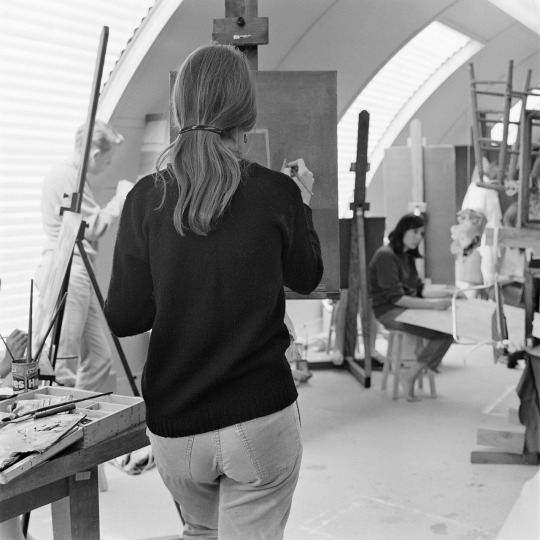
Harry Crosby, UCSD, Visual Arts classroom, 1966
#academia#60s#60s fashion#1960s#1960s fashion#vintage fashion#vintage#artist#visual arts#harry crosby#ucsd#university of california#uc san diego#san diego#easel#artist studio#artist easel#black and white#photography#special collections & archives uc san diego#an3_m333_785_10
150 notes
·
View notes
Text
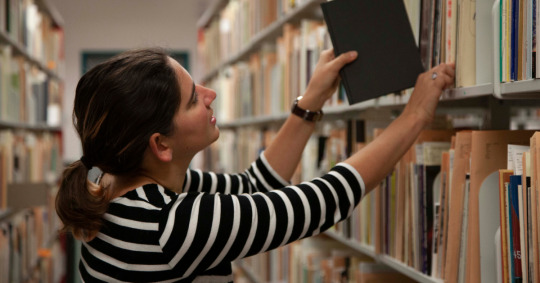
UC San Diego Library Receives Grant to Digitize Archive for New Poetry Collection
Mellon Foundation awards Library $250,000 to preserve audiovisual items in heavily-used research collection
Audiovisual items within the UC San Diego Library’s Archive for New Poetry (ANP) collection will be digitized and preserved thanks to a $250,000 grant awarded to the organization by the Mellon Foundation.
Through this project, the team plans to digitize approximately 2,500 sound recordings and 200 films and videos in the ANP. Digitized materials will be added to the Library's Digital Asset Management System for discovery and long-term preservation via its Digital Collections website and online catalog, UC Library Search.
“We are incredibly grateful the Mellon Foundation encouraged us to apply for this grant and ultimately awarded us the funds to get this project underway,” said Erik Mitchell, Audrey Geisel University Librarian at UC San Diego. “This will enhance our ability to provide researchers with the information they need to gain a greater understanding of the world of modern poetry.”
In addition to the digitization effort, the Library plans to launch "Future Files," a curriculum-based initiative that will provide contemporary poets and creators with instructions on how to build and sustain their born-digital material and physical manuscript collections to ensure their work can be accessible to future generations of literature enthusiasts and scholars.
This culturally- and academically-significant collection, housed within the Library’s Special Collections & Archives (SC&A), was established in 1968 and is currently one of the largest and most active poetry collections in the United States. It is a comprehensive research collection of post-1945 American poetry with an emphasis on experimental and avant-garde poetics.
The collection includes more than 35,000 volumes, 1,800 serial titles, 700 broadsides, little magazines, ephemeral printings, artists' books along with extensive holdings of literary manuscripts, correspondence and original sound and video recordings.
The goals for this project are twofold: (1) to preserve and enhance accessibility for audiovisual content in the ANP; and (2) to teach and provide tools for working poets and creators today to practice mindful preservation of their records. Coincidentally, the grant period coincides with the 50th anniversary of the New Writing Series, a reading series run by the UC San Diego Department of Literature and supported, digitized and archived by the Library.
“The Archive for New Poetry is one of our earliest collections of emphasis and highly used,” said Lynda Claassen, longtime director of Special Collections & Archives at UC San Diego. “We take great pride in our ability to provide our community with a comprehensive collection of poetry-related materials and are pleased we’re able to make these items even more accessible through this grant-funded project.”
Prior to the COVID-19 pandemic, SC&A staff fielded approximately 2,000 ANP reference requests annually. During the pandemic, when the Library did not permit on-site use, SC&A filled research requests for ANP materials by providing more than 21,000 digital scans from the collection.
“This collection documents not only the published output of poets and writers, but also the records of their creative processes, collaborations, lived experiences and relationships with other poets and artists,” said Archive for New Poetry Curator Nina Mamikunian. “I am excited to get this project underway, with the assistance of my colleagues in Special Collections & Archives, and be able to readily share the digitized materials with both our campus community and the public.”
The newly digitized ANP materials will be accessible online in late 2024. The “Future Files” curriculum will be rolled out in tandem. For additional information on the ANP, visit http://lib.ucsd.edu/anp.
21 notes
·
View notes
Text
What Big Oil Knew About Its Products’ Climate Risks—and When – Mother Jones
What Big Oil Knew About Its Products’ Climate Risks—and When – Mother Jones
Scientist Roger Revelle, an adviser who warned Lyndon Johnson about climate change in 1965, greets the president in the Oval Office.Roger Revelle papers/Special Collections Archives/UC San Diego
This story was originally published by Yale E360 and is reproduced here as part of the Climate Desk collaboration.
Carroll Muffett began wondering in 2008 when the world’s biggest oil companies had…

View On WordPress
0 notes
Photo

Verb Rose, Alice Notley Papers, MSS 319, Special Collections and Archives, UC San Diego.
44 notes
·
View notes
Photo
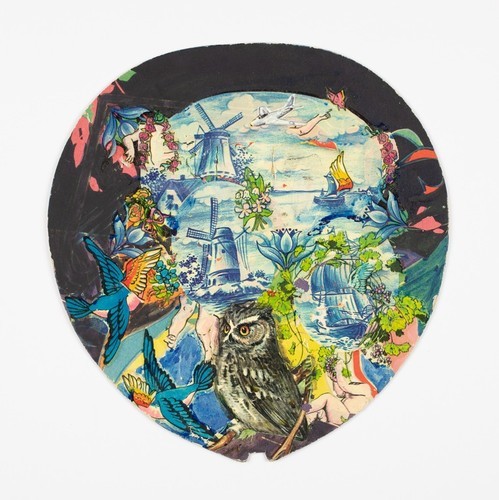
Birds. Alice Notley Papers.
Special Collections and Archives, UC San Diego.
3 notes
·
View notes
Text
Archaeological sites to see near Clairemont, San Diego
Clairemont is an area within the city of San Diego that has above 81, 700 home owners, which has terrific features, such as mesas, canyons, and likewise on top of that streams. The moving mesas are separated by canyons like the Tecolote Canyon, along with the San Clemente Canyon. In Clairemont, the plants is whatever around quick bushes along with likewise cactus, together with in addition to that wild animals there consists of prairie wolves, bunnies, in addition to in addition owls! If you're seeing this location you'll genuinely feel that nature possibly to its exceptional along with whatever relocates with it. Nevertheless these are not the only benefits you'll reach value right here, nonetheless historical net websites or galleries that are near it. San Diego is a treasure in areas, together with we are probably to given listed below various of those historic together with website visitor websites to check out near Clairemont.
Mormon Armada Historic Net Website
This internet site honors the Mormon Armada's historic journey. The Mormon Armada was a team of stressing 500 Saints that signed up with the USA Armed force back in 1846 to offer sponsorship to member of the family together with Mormon leaders, each of this throughout the Mexican-American Fight. If you see this web website, you'll get to see an interactive video clip spectacular experience, historical artefacts, together with additionally some conversations on gold panning, along with on top of that brickmaking.
Address: 2510 Juan St, San Diego, CA 92110
Old Town San Diego Historic Park
Old Town San Diego Historic Park is thought about a living background museum that secures together with honors numerous historic structures that date from the 19th century. This is just one of the most seen state park in The golden state as you can find a variety of components that originate from San Diego's early history together with additionally culture. At this historical location, you would certainly likewise have the ability to delight in shops, taking in centers, together with places where to obtain genuine innovations along with food. Site site visitors can have the possibility to value the discussion of some roadway musicians, that additionally make their appearance throughout celebrations as well as numerous other standard events.
Address: 4002 Wallace St, San Diego, CA 92110

Wisteria House
Wisteria Residence is an intriguing home with appealing views of the Pacific. This terrific home beings in the facility of a substantial together with charming green lawn that's bordered by 2 Canary Island day hands. A long term arbor generates the front door along with it's covered with growing wisteria slipping plants, so it details is a fantastic picture you can not miss if you strike lowered in the location of La Jolla. The Historical Culture has in fact looked after of refurbishing as well as replacing your residence to increment its charm.
Address: 780 Prospect St, La Jolla, CA 92037
The gold state Tower
The The golden state Tower could be one of amongst among the most well-known photos in San Diego, as it's a rising-- along with extremely reviewed-- structure that can be seen from miles away. The gold state Tower is a framework crossbreed that blends various designs, such as Baroque, Rococo, together with Gothic; the structure houses the San Diego Gallery of Man. Regretfully, the California Tower it's under maintenance, along with it will most certainly be returned to by the end of 2019. This need to not be an obstacle in defining a day to visit it, considered that it's a splendid framework that asks for to not go obscure, which's most absolutely worth the see.
Address: 1350 El Prado, California Tower, San Diego, CA 92101
Marston Residence Gallery & Gardens
If you're trying to find an excellent example of the Arts in addition to Crafts activity, then you must go consider the Marston House Gallery & Gardens, a residential property or commercial residential or business residential or commercial property that was produced in addition to likewise established by William Sterling Hebbard together with Irving Gill, both acknowledged developers. Throughout your check out, you would definitely have the capacity to take a look at the buildings, the official lawn, along with the canyon programs. Along with that, you would absolutely have the possibility of delighting in the shade supplied by the eucalyptus together with oak trees you'll see there. Generally, the Marston House Gallery & Gardens is bordered by 5 acres of rolling grass along with likewise rustic canyon lawns.
Address: 3525 7th Ave, San Diego, CA 92103

San Diego Gallery Of Art
The San Diego Gallery of Art is so abundant together with varied that it is considered the world's finest art in America's Straight-out optimal City. This art gallery exists at the heart of Balboa Park, where you can locate a variety of outstanding collections, which go from South Eastern paints to Spanish in addition to in addition Italian task. Sculptures together with Indian paints can likewise exist listed below! The San Diego Gallery of Arts on a regular basis consists of considerable events from around the globe along with it in addition to that holds social as well as curriculum for young people along with grownups. Admission is complimentary for people that are 17 & under.
Address: 1450 El Prado, San Diego, CA 92102
UCSD
The College of The gold state San Diego figures in the leading 15 research study colleges around the world in addition to in addition its significant goal is to outfit severe minds to make a distinction. Out of this, the UCSD takes satisfaction besides the education and also finding out together with situating it gives, with the style utilized in its centers, such as the UCSD collection," The Geisel" framework. This framework relies on the facility of the UC establishment in addition to in addition it houses over 7 million training along with research study amounts; consisting of the Mandeville Unique Collections along with Archives. The framework was developed by William Pereira in addition to on top of that its weird style is simply among the significant variables people see the UCSD university. An included factor to take a look at is the notable Stuart Collection, which can furthermore exist right here. It includes a special assemblage of site-specific jobs by leading artists of our time.
Address: 9500 Gilman Dr, La Jolla, CA 92093
YogaSix
3065-B, Clairemont Dr, San Diego, CA 92117
(858) 987-4808
[email protected]
www.yogasix.com/bay-park
Monday trough Sunday from 5am to 9pm

1 note
·
View note
Text
Day With(out) Art, the program

Amoqa is proud to partner with Visual AIDS for the thirtieth annual Day With(out) Art by presenting STILL BEGINNING, a program of seven newly commissioned videos responding to the ongoing HIV/AIDS epidemic by Shanti Avirgan, Nguyen Tan Hoang, Carl George, Viva Ruiz, Iman Shervington, Jack Waters/Victor F.M. Torres, and Derrick Woods-Morrow.
Shanti Avirgan, Beat Goes On
Beat Goes On is an impressionistic portrait of the activist Keith Cylar (1958–2004), co-founder of Housing Works and a central figure in the AIDS Coalition To Unleash Power (ACT UP) NY. Cylar spoke clearly, frequently and with moral force about the struggles of people living with HIV/AIDS in New York City, many of whom were impoverished and struggling with multiple social and medical problems. His openness about his own drug use and the centrality of the fight against the criminalization of drugs for AIDS activism make Cylar's legacy especially resonant and relevant at this time. A fellow harm reduction activist recalls how "Keith moved from mixing with the government, to threatening the government, to beating the government—all in the space of five minutes." By resurfacing and weaving together archival media of Cylar's own words and actions, this video will endeavor to convey—in the space of about five minutes—some of the personal charisma, political savvy and fearlessness that characterized Cylar's advocacy.
Bio: Shanti Avirgan is a documentary producer and archival researcher. Her work related to the AIDS crisis includes the feature documentaries Pills Profits Protest (2004); Sex in an Epidemic (2009); Larry Kramer in Love & Anger (2015); 5B (2019) and a forthcoming film about the photographer Peter Hujar. She has worked with a number of organizations in Brazil and the US to create, archive and curate video about ongoing HIV/AIDS activism. Shanti has also worked as a producer for National Geographic's climate change TV series Years of Living Dangerously, and the feature documentaries The Yes Men Are Revolting (2014), Life, Animated (2016) and Agility (2020), about the anthropologist Esther Newton. She holds a BA in Latin American Studies and Anthropology from UT Austin, was a Fulbright Scholar in Brazil at the Federal University of Bahia, and has an MPhil in Anthropology from NYU, where she studied medical anthropology and documentary filmmaking.
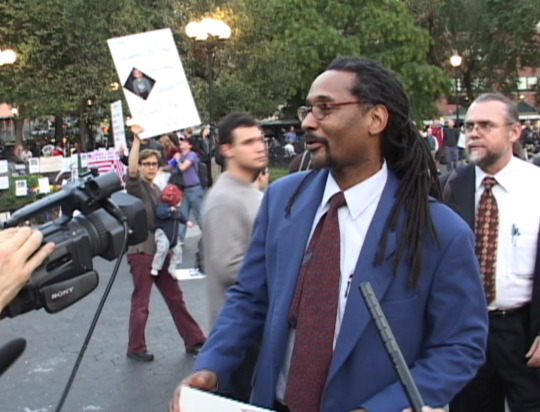
Shanti Avirgan, Beat Goes On, 2019. Commissioned for Visual AIDS’ Day With(out) Art 2019. Still courtesy of the artist
Carl George, The Lie
The Lie is the latest in an ongoing series of short films drawing on found footage and materials from the artist’s archive. Offering “ruminations on ruined nations,” the film aims to expose the links between war, AIDS, capitalism, and the persistent mythologies that bind them all.
Bio: Carl George is an artist and activist working in experimental film, painting and collage. His short experimental films have shown in festivals internationally and are in the permanent collections of the Museum of Modern Art, the Whitney, the Guggenheim Museum and the New York Public Library. His 1989 film DHPG Mon Amour, documenting the radical advances made by people with AIDS in developing their own health care, is a classic of AIDS activist filmmaking and was incorporated into the Oscar-nominated documentary How to Survive a Plague (2012). His visual art can be seen on the Visual AIDS Artist Registry.

Carl George, The Lie, 2019. Commissioned for Visual AIDS’ Day With(out) Art 2019. Still courtesy of the artist
Nguyen Tan Hoang, I Remember Dancing
I Remember Dancing brings together an intergenerational cast of trans and queer gaysians ruminating on the past and future of AIDS, activism, gay culture, love, and (un)safe sex. Inspired by Joe Brainard’s I Remember poems, these confessions illuminate perspectives of queer Asian communities often absent from whitewashed narratives of HIV and AIDS. Grief, regret, longing, risk, and pleasure surface as their memories and fantasies blur into one another.
Bio: Nguyen Tan Hoang is a videomaker and film and media scholar. His short experimental videos include K.I.P, Forever Bottom!, PIRATED! and look_im_azn. He is the author of A View from the Bottom: Asian American Masculinity and Sexual Representation (Duke UP, 2014) and articles on porn pedagogy and Southeast Asian queer cinema. He teaches literature, film, and cultural studies at UC San Diego.

Nguyen Tan Hoang, I Remember Dancing, 2019. Commissioned for Visual AIDS’ Day With(out) Art 2019. Still courtesy of the artist
Viva Ruiz, Chloe Dzubilo: There is a Transolution
Viva Ruiz invites transgender AIDS activist, artist, and beloved friend Chloe Dzubilo (1960–2011) to speak via never before seen Hi-8 footage filmed by Chloe's then-partner Kelly McGowan. The process triangulates mother (Chloe), lover (Kelly), and child (Viva) in a deliberate ritual to uplift the spirit and legacy of an ancestral teacher. Through artifacts from the moment when video first became accessible and before mobile phone cameras became ubiquitous, we witness Chloe declare herself and her sisters as leaders in art, advocacy and culture for evermore.
Bio: Viva Ruiz is the daughter of Ecuadorian immigrants and a community and nightlife-educated advocate and artist born and based in New York City. The throughline of her work across mediums is a passion to dismantle white supremacy and exorcise the colonial/colonized mindset. In 2017, she programmed sex education and practical spirituality workshops as an invited curator for the New Museum’s "Scamming the Patriarchy" youth summit. Her 2019 solo exhibition “ProAbortion Shakira: A Thank God For Abortion Introspective” at PARTICIPANT, INC included work related to the multimedia abortion de-stigmatization experiment THANK GOD FOR ABORTION.

Viva Ruiz, Chloe Dzubilo: There is a Transolution, 2019. Commissioned for Visual AIDS’ Day With(out) Art 2019. Still courtesy of the artist
Iman Shervington, I’m Still Me
I'm Still Me explores how digital platforms have created community and connections for Sian, a Black woman living with HIV and navigating the stigma and misinformation that is prevalent in the American South. Through her blog, social media accounts and online video platforms, Sian connects with (predominately) heterosexual Black women that send her messages, ask questions, and share their experiences with stigma and fear, all the while creating community that may have previously only existed in the shadows.
Bio: Iman Shervington is the Director of Media & Communications at the Institute of Women & Ethnic Studies (IWES), a public health non-profit. Through IWES, Iman has utilized her script development, cinematography, directing, producing, and editing skills to create over 50 short films and PSAs, a web-series, a feature-length documentary, two feature-length narrative films and an award-winning podcast. In 2016, Iman was chosen as a Robert Wood Johnson Foundation Culture of Health Leader to promote a culture of health in New Orleans and she received the award as a "Changemaker" in the New Orleans-based Millennial Awards. Outside of film, Iman specializes in social marketing, social media management, graphic design, photography, positive youth development, participatory action research, and media literacy.

Iman Shervington, I'm Still Me, 2019. Commissioned for Visual AIDS’ Day With(out) Art 2019. Still courtesy of the artist
Jack Waters/Victor F.M. Torres, (eye, virus)
Through an experimental collage of video and pictographs, (eye, virus) explores how conversations around disclosure, stigma, and harm reduction shift across generations and from public to private realms. Combining street interviews with footage from a punk show and a mobile testing site, the video centers pleasure and community as it expands the conversation around HIV to include hepatitis C and the opioid epidemic. (eye, virus) extends from documentation of a 2017 public program titled AIDS OS Y Version 10.11.6, and is collaboratively produced with Nikki Sweet.
Bio: Jack Waters is a visual artist, film maker, writer, media artist, choreographer and performer. Jack’s work has been shown at the Museum of Modern Art, the New Museum, the New York and London Film Makers Cooperatives, Center for Contemporary Culture Barcelona, and Anthology Film Archives. With his partner Peter Cramer, Jack co-directed ABC No Rio from 1983–1991 and founded the non-profit arts umbrella Allied Productions, Inc., as well as the community art garden Le Petit Versailles. The first part of Jack’s musical opus Pestilence will premiere at LaMaMa Experimental Theater Club in Spring 2020. His visual art can be seen on the Visual AIDS Artist Registry.
Victor F. M. Torres is an intermedia artist born in Rio de Janeiro, Brazil, currently living in Brooklyn, NY. Torres holds an MFA in Intermedia and Digital Arts and a BA in Socio-Cultural Anthropology, both from the University of Maryland, Baltimore County. He is an Adjunct Faculty at John Jay College of Criminal Justice, CUNY. Torres has taught at the Maryland Institute College of Art, Stevenson University, George Mason University, and UMBC. He is the author of Language Writes Myth Writes Reality: Or How Does the Acculturated Body Take the Role of Culture Maker?. Torres’ sculptural work snapshots the relationship between information retention, capacitive touch, and bronze age aesthetics, thinning the threshold between primitivism and futurism. His work has been shown at the Museum of Modern Art, Baltimore Museum of Art, Monmouth Museum, MIX NYC, Maryland Art Place, and Grace Exhibition Space, among others.

Jack Waters/Victor F.M. Torres, (eye, virus), 2019. Commissioned for Visual AIDS’ Day With(out) Art 2019. Still courtesy of the artists
Derrick Woods-Morrow, Much handled things are always soft (8:36)
Much handled things are always soft unearths the unwritten and undocumented histories of public sex culture in the south-side of Chicago. Through conversation with longterm survivor Patric McCoy, the film traces the height of activity in the 1970s, the downfall of cruising culture in the 1980s, and the prevailing summer heat, which continues to linger. Together, McCoy and Woods-Morrow reflect on their relationship to cruising, to photography, and to each other; attempting to bridge the gap between what was, and what still remains to be explored.
Bio: Derrick Woods-Morrow’s work is a meditation on deviation and disruption. Currently based in Chicago, his artistic practice deploys a wide variety of media, including photographic transfers, digital video collage, ceramics, and narrative performance. Exploring modes of representation, he salvages, displaces, and removes raw material from sites of historical significance and trauma, reimagines their future purpose and denies their perceived function, while actively interrogating the correlation between labor and play. A recipient of the 2018 Artadia Award, Derrick received his MFA in Photography from the School of Art Institute of Chicago in 2016, and was most recently an Adjunct Assistant Professor of Photography and Teaching Artist at the University of Illinois Chicago. His work appeared in the 2019 Whitney Biennial, in collaboration with Paul Mpagi Sepuya and his recent works were shown at YNCI V: Detroit Art Week Expo, in a solo exhibition curated by Darryl Terrell.
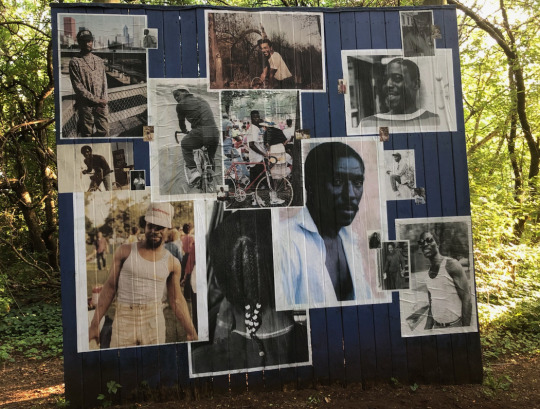
Derrick Woods-Morrow, Much handled things are always soft, 2019. Commissioned for Visual AIDS’ Day With(out) Art 2019. Production still by Patric McCoy
0 notes
Text
Celebrating Women's History Month in Sanctuaries: Pioneering Female Scientists

The Dr. Nancy Foster Scholarship provides support for independent graduate-level studies in oceanography, marine biology, or maritime archaeology, with a particular focus on women and minorities. Photo: Sarah Fangman/NOAA
It's a dark cold night in the early 1830s in Nantucket, Massachusetts. On one house's widow's walk, a father and daughter, bundled against the cold, are studying the night sky, stars, and seas, armed with telescope and sextant. When the whalers leave port next time, passing through what is now Stellwagen Bank National Marine Sanctuary, bound for distant waters in the Atlantic, Pacific, and Arctic, they will carry the navigational calculations that young Maria Mitchell has provided them.
Facing the social views of her time, Mitchell later wrote: "First, no woman should say, 'I am but a woman!' But a woman! What more can you ask to be?" She and other pioneering female scientists are the intellectual ancestors of thousands of American women today working in STEM fields: science, technology, engineering, and mathematics. In the National Marine Sanctuary System, about half of our sanctuary research coordinators are female, as are other members of our science team, working as socio-economists, marine archaeologists, and marine scientists to help achieve our conservation mission.

Dr. Jenni Stanley deploys a hydrophone in Gray's Reef National Marine Sanctuary. Photo: Alison Scott/NOAA
Nearly a century and a half after Mitchell taught astronomy to her female students at Vassar College, many young women enter STEM fields. Yet much work remains. There are over seven million STEM workers in the U.S.; more of them are women than ever before. Half of our working biological and environmental scientists are women, yet women lag behind in other sciences like engineering and computer science. Over 70,000 women employed in STEM fields serve the American people as part of the federal government, but that's only about 23% of 300,000 federal scientists, engineers, and technical experts.
Leading up to college, boys and girls enroll in and perform similarly well in math and science courses and exams. The first disparities appear at the university level and continue, at least for some science and engineering fields, into the professional world. Sociological research shows that bias plays a major role in preventing women from entering or hastening the departure of women from STEM fields. One fundamental solution to reducing the gender disparity in STEM fields is to address bias, through such ways as being aware of and addressing our personal biases, and undergoing anti-bias training and education.

High school students learn how to filter a core sample from Channel Islands National Marine Sanctuary. At this age, boys and girls both enjoy and perform equally well in the sciences; the first great differences are seen at the university level and beyond. Photo: Claire Fackler/NOAA
Another solution is to encourage more girls to become and stay interested in the sciences. Effective strategies recommended by SciGirls include engaging girls in small collaborative groups; encouraging girls to use their creativity and think critically; and motivating girls with hands-on projects. Although the National Marine Sanctuary System's Ocean Guardian School Program wasn't designed specifically to address gender disparity in STEM education, it uses these kinds of approaches to engage elementary school students in ocean science and conservation.
Seaberry Nachbar, Ocean Guardian School program director, says, "The Ocean Guardian School Program provides the opportunity for girls and boys to apply real-world science to current issues that are impacting our ocean resources. In the process of doing this they are provided with the scientific knowledge, awareness, and confidence to make a difference in their future." When women are encouraged and supported in STEM fields, they can make a lasting impact on our nation and our sciences. Maria Mitchell, for example, had an unusual amount of support and education as a girl and woman of her time, and she went on to be a respected astronomer, discoverer of a comet, college professor, and mentor to young female scientists.

Through initiatives like Students for Zero Waste Week, the Ocean Guardian School program provides the opportunity for girls and boys to apply real-world science to current issues that are impacting our ocean resources. Photo courtesy of NOAA
Mitchell also had the distinction of being the first professional woman hired by the federal government. She was hired to do astronomical observations for the U.S. Coast Survey, now part of NOAA. She paved the way for a number of other distinguished scientists, who happen to be women, at NOAA and its forebear agencies, among them marine zoologist Dr. Mary Jane Rathbun (U.S. Bureau of Fisheries, the forerunner to today's U.S. Fish and Wildlife Service and National Marine Fisheries Service), coral expert Dr. Elizabeth Deichmann (U.S. Bureau of Fisheries), meteorologist June Bacon-Bercey (National Weather Service), author and activist Dr. Rachel Carson (U.S. Bureau of Fisheries), explorer Dr. Sylvia Earle (NOAA), Rear Admiral Evelyn Fields (NOAA Corps), and marine biologist Dr. Nancy Foster (NOAA).

Dr. Roger Airliner Young, shown here c1931, was the first African-American woman to earn her doctorate in zoology. She did her early work on marine organisms at the Woods Hole Marine Biological Laboratories. Photo courtesy of Woods Hole Marine Biological Laboratory under Creative Commons license

Dr. Easter Ellen Cupp, shown here at Scripps Institute of Oceanography, c1935, was the first American woman to receive a doctorate in oceanography. Her pioneering work Marine Plankton Diatoms of the West Coast of North America is still used in marine invertebrate work today. Photo courtesy of Special Collections and Archives, UC San Diego
Dr. Foster joined NOAA in 1977, served as the National Marine Sanctuary System's first permanent female director from 1983 to 1986, and eventually became the head of NOAA's National Ocean Service. When she died in 2000, she left behind an unmatched marine conservation bequest for the nation, a legacy that inspired the creation of a scholarship fund bearing her name. The Dr. Nancy Foster Scholarship Program, funded and overseen by the NOAA Office of National Marine Sanctuaries, provides support for independent graduate-level studies in oceanography, marine biology, or maritime archaeology (including all science, engineering, social science, and resource management of ocean and coastal areas), with a particular focus on women and minorities. Since its founding in 2000, the scholarship has supported 65 students, most of them women.
All of the Nancy Foster Scholars who have completed their education under the scholarship have gone on to professional science careers or to advanced education. Their research has covered everything from nutrient cycling in seagrass beds to coral reef erosion, and from seabird predatory behavior to dolphin population dynamics. The success of the scholarship program is a fitting tribute to both Dr. Foster's marine conservation achievements and her legacy of fostering diversity and connection.
Maria Mitchell wrote, “Resolved, in case of my outliving father and being in good health, to give my efforts to the intellectual culture of women.” Her legacy was bigger and brighter than even she could probably imagine. This month, we honor her and all the women scholars and scientists who pioneered the way for those of us who follow.
#women in stem#women in science#international womens day#womens history month#science#women#history#noaa#scientists#scientist
81 notes
·
View notes
Link
Artist: Bernadette Mayer
Venue: CANADA, New York
Exhibition Title: Memory
Date: September 8 – October 8, 2017
Click here to view slideshow
Full gallery of images, press release and link available after the jump.
Images:
Installation images courtesy of CANADA, New York. Individual images courtesy of Bernadette Mayer Papers; Special Collections & Archives; University of California, San Diego.
Press Release:
CANADA is pleased to present Bernadette Mayer’s multimedia work Memory, created in 1971 and originally shown in February of 1972 at 98 Greene Street, the art and performance space run by Holly Solomon. This is the first installation of the piece in its original form since ’72.
Mayer has described the work as “an emotional science project.” The first phase involved Mayer shooting a roll of 35mm slide film and writing a journal everyday for the month of July 1971. At the end of the month she developed the film and projected the slides, an experience of remembering the month that allowed her to further refine the writing. For the exhibition, she had snapshots made from the slides and mounted them unedited, in order, and recorded the final text, which was played in the gallery. In a review of the show in the Village Voice, critic A. D. Coleman called the installation—a total of 1,100 prints and approximately six hours of narration—an “enormous accumulation of data” that “explores photography not as an art but as a tool which has extended our vision in ways we have yet to comprehend.” The orderly grid of photographs, broken only by the numbers of the days (written in Mayer’s hand,) reveals an underlying structure; upon closer examination this dissolves into a profusion of details: the streets of New York, meals, store windows, cars, signs, restaurant interiors, trees, the construction of the World Trade Center, fireworks on July 4, laundry drying on a fire escape, portraits of her friends and her then boyfriend, filmmaker Ed Bowes. Periodically, Mayer also appears, in self-portraits, and photographs by Bowes.
The project continued on in other forms. Following the show, Memory was exhibited in Mayer’s home, a loft on Grand Street, open by appointment. A much-condensed version, titled Remembering and exhibited in a 3-ring binder, was included in Lucy Lippard’s seminal show of conceptual art by women, titled “c. 7,500” and shown in various venues in 1973 and 1974. Mayer reworked the text again for publication by North Atlantic Books in 1975; the book, which is how most people know about the project, included a selection of images reproduced in black and white on the cover. Aside from a few individual images that have been reproduced as part of articles on Mayer’s work, the project was not shown again until last year, when the Poetry Foundation in Chicago recreated the work with reprints from the original slides.
Although Mayer is widely acclaimed as a poet, this work sheds new light on her deep involvement and origins in conceptual art. In the late 1960s she co-edited with Vito Acconci the magazine 0 TO 9, one of the period’s most vivid documents of the convergence of experimental art and poetry. Like Acconci’s gravitation towards performance art, Memory represented Mayer’s attempt to move language/poetry beyond the printed page. Mayer did not continue as a visual artist, but the project laid the foundation for some of her most important poetic works. Her next project, Studying Hunger, was also a time- and journal-based project, driven by an idea, as she described, “that if a human, a writer, could come up with a workable code, or shorthand, for the transcription of every event, every motion, every transition of his or own mind . . . he or we or someone could come up with a great piece of language/information.” Mayer’s Midwinter Day, is perhaps the culmination of these experiments in transposing states of consciousness and the minutiae of daily life, an epic poem written about and during one day, December 22, 1978, the shortest day of the year. These ideas have lived on in her infamous “Experiments List,” a list of writing experiments and journal ideas, widely used by teachers of poetry for decades.
Mayer’s Memory and her other diaristic conceptual works explore the relationship between text, image, and duration through her prescient attempts to create an all-out document of the inner psyche—a feat that is now almost ubiquitous in a society preoccupied with the task of obsessively recording and sharing every detail of daily life. Exhibiting Memory forty-five years after its initial debut emphasizes the profound nature of memory itself as utterly intangible and unknowable despite myriad attempts to capture it, and how blurry the line between past and present has become as the speed at which memories are generated accelerates every day. This rare opportunity to see the original materials from Mayer’s installation from 1972, clearly reveals its own relationship to temporality, as the original photographs and boards have faded over time. While some missing photos were reprinted to complete the piece for the exhibition, this only highlights the discrepancies in Memory itself, furthering the project’s fleeting trajectory across a new axis of time.
Bernadette Mayer was born in 1945 in Brooklyn, New York. Widely regarded as one of the most innovative experimental writers of her generation, she is the author of over thirty books including The Desires of Mothers to Please Others in Letters (2017, 1994), Eating the Colors of a Lineup of Words(2015), Sonnets (2015, 1989), The Helens of Troy, New York (2013), Studying Hunger Journals (2011), Midwinter Day (1999, 1982), and A Bernadette Mayer Reader (1992). Her most recent book, Works and Days (2017), was a finalist for the National Book Critic Circle Awards. She has been the recipient of numerous other grants and awards, including from the Guggenheim Foundation, the Poetry Society of America, and Creative Capital. Mayer is also known for her teaching and has led classes and workshops in experimental poetry at Naropa University, The New School for Social Research, and The Poetry Project at St. Mark’s Church. She continues to work with students from her home in upstate New York.
Thank you to the Department of Special Collections & Archives at the UC San Diego Library for providing digital & audio materials for this exhibition.
Link: Bernadette Mayer at CANADA
Contemporary Art Daily is produced by Contemporary Art Group, a not-for-profit organization. We rely on our audience to help fund the publication of exhibitions that show up in this RSS feed. Please consider supporting us by making a donation today.
from Contemporary Art Daily http://bit.ly/2xkTo3Y
0 notes
Photo
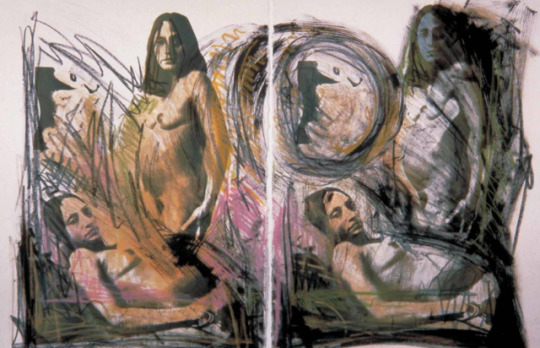
Josely Carvalho (Brazilian, b. 1942), Waiting, 1982Silkscreen and crayon on paper (diptych). 30 1/8 x 22 1/4 (76.5 × 56.5 cm) each. Courtesy of Josely Carvalho. Artwork © the artist. Image courtesy of the Hammer Museum.
Thursday, September 21–Wednesday, September 27
Thursday, September 21
Special: Signal Tide, LACMA (Miracle Mile), 9:29am.
African Masks from June Harwood Collection (Silent auction) and "Sharpener" (Faculty Exhibition), Pasadena City College Art Galleries (Pasadena), 12–1pm. Also October 13.
Artist talk: Jaime Guerrero, Skidmore Contemporary Art (Santa Monica), 4pm.
Talk: Meditation and Art—Dutch Paintings, LACMA (Miracle Mile), 4pm.
Historia Plantarum, The Huntington (San Marino), 4:30–6pm.
Dialogue: Leonard Koren and Mário Ramiro on Zines, University of San Diego (San Diego), 5:30pm.
Picturing Prince: An Intimate Portrait by Steve Parke, Mouche Gallery (Beverly Hills), 6–8pm.
Radical Women Walk-through: Beatriz Cortez, Hammer Museum (Westwood), 6pm.
Hot is Cool Summer Film Series, Palm Springs Art Museum (Palm Springs), 6pm.
BORDERS, Self Help Graphics & Art (Downtown), 7pm.
Film Night: The Mahabharata, Laguna Art Museum (Laguna Beach), 7pm.
THE PAWNBROKER / MUDHONEY, Hauser & Wirth Los Angeles (Downtown), 8–10pm.
Sorry, Atlantis: Eden’s Achin’ Organ Seeks Revenge by Asher Hartman, Machine Project (Echo Park), 8:30pm. $20–40.
Charlotte Dos Santos, Center for the Arts, Eagle Rock (Eagle Rock), 9pm. $10–15.
Art Matters Fall 2017, Santa Barbara Museum of Art (Santa Barbara), $60–75. Also September 28 and October 5, 12, 19.
Friday, September 22
The Artist Business, The Mistake Room (Downtown), 3–5pm. RSVP recommended.
Educator Open House: The Scratch and Sniff Museum, Santa Barbara Museum of Art (Santa Barbara), 4–6pm.
Ism, Ism, Ism: Experimental Cinema in Latin America, REDCAT (Downtown), 7pm. $8–10. Through September 24.
Mercado Los Olvidados, pskaufman... gallery (Downtown), 7pm. Through September 24. $10–35.
Facing, BBQLA (Downtown), 7–11pm.
Cool World, Previously Invisible To Me, and YIELD: Poems and Drawin's, Club Pro Los Angeles (Downtown), 7–11pm.
Latinas Out Loud: ¡Pa’rriba!, Hammer Museum (Westwood), 7:30–10:30pm.
Saturday, September 23
Around the Table, Long Beach Museum of Art (Long Beach), 8:30–10:30am.
Dino Fest, Museum of Natural History (Downtown), 9:30am–5pm. Continues September 24.
Flower Arranging: Succulent Wreaths, The Huntington (San Marino), 10am–12pm.
Latin American and Latinx Art Via South Bay/Long Beach Shuttle Art Tour, various locations (throughout Los Angeles and beyond), 10am–5pm. Continues September 24.
Workshop: Feeling One Self (a relational practice) with Melanie Maar, Pieter (Lincoln Heights), 11am–3pm. $30.
unDocumenta, Oceanside Museum of Art (OMA) (Oceanside), 11am–5pm.
¡Murales Rebeldes! L.A. Chicana/o Murals under Siege, LA Plaza de Cultura y Artes (Downtown), 12–6pm.
Smithsonian Magazine Presents Museum Day Live!, Pasadena Museum of California Art (Pasadena), 12–5pm.
Chakra Mapping And Art Workshop, Women’s Center for Creative Work (Frogtown), 1–5pm. $24–30.
Children’s Flower Arranging: Mini Succulent Wreaths, The Huntington (San Marino), 1–2:30pm.
ECLIPSE: A Discussion and Q&A, Art Center College of Design (Pasadena), 1pm.
Talk: From the Kilns to the Grave: Pottery from the Three Kingdoms Period of Korea, LACMA (Miracle Mile), 2pm.
From Latin America to Hollywood: Latino Film Culture in Los Angeles 1967–2017, Academy of Motion Picture Arts and Sciences (Beverly Hills), 2pm.
Marathon Sketching: En Plein Air, Pasadena Museum of California Art (Pasadena), 2–5pm.
A Woman's Place…, The William Grant Still Arts Center (West Adams), 3–6pm.
RESTORE: Modeling Alternatives to the Criminal Justice System, OCHI Projects (Mid-City), 3pm.
Billy Al Bengston: Dentos, 1965 - 1970, parrasch heijnen gallery (Downtown), 3–6pm.
Jaime Guerrero Artist Talk, Craft in America Center (Beverly Grove), 4pm.
Film: "Chocolate" and "Still Alice", LACMA (Miracle Mile), 4pm.
Robert Rauschenberg: Horsefeathers Thirteen and John Baldessari: Hands & Feet, Gemini G.E.L. (West Hollywood), 4–7pm.
LA / LA / LA, Robert Berman Gallery (Santa Monica), 5–8pm.
Artist talk: Kathy Curtis Cahill: Childhood Matters, Diane Mann: ...Continued, Carole Garland: I <3 DTLA, Elyse Wyman: Positive From Negative, TAG Gallery (Santa Monica), 5–8pm.
Alfredo Ramos Martinez and Latin American Modernism, Louis Stern Fine Arts (Beverly Hills), 5–7pm.
HANS BURKHARDT IN MEXICO, Jack Rutberg Fine Arts (Fairfax), 5–8pm.
Coastal/Border and Southbay / Long Beach Hub Opening Reception, Angels Gate Cultural Center (San Pedro), 5pm.
Frank Bowling, Marc Selwyn Fine Art (Beverly Hills), discussion with Gavin Delahunty, Senior Curator of Contemporary Art, Dallas Museum of Art, 5:30–7:30pm.
Christina Fernandez: Prospect, Gallery Luisotti (Santa Monica), 6–8pm.
Axé Bahia: The Power of Art in an Afro-Brazilian Metropolis, Fowler Museum (Westwood), 6–10pm. Opening day programs, September 24.
Skip Arnold: plus ou moins and Stephen Neidich: not necessarily necessary, ltd los angeles (Mid-City), 6–8pm.
Retna: Mano A Mano, New Image Art (West Hollywood), 6pm.
David Armacost and Nilay Lawson: Untitled, 2017, AA|LA (West Hollywood), 6–9pm.
Pedro Friedeberg: Tetragrammoebius, M+B (West Hollywood), 6–8pm.
Claire Anna Baker: Suspended Wire: Suspended Wire, Moskowitz Bayse (Hollywood), 6–9pm.
Amir H. Fallah: A Stranger In Your Home, Shulamit Nazarian (Hollywood), 6–9pm.
Jagdeep Raina, Grice Bench (Downtown), 6–9pm.
Renaud Jerez, Jenny’s (Silver Lake), 6–8pm.
Live Broadcast of Carmen, Exposition Park (Downtown) and Santa Monica Pier (Santa Monica), 7pm.
Sonorama! Latin American Composers in Hollywood, Getty Center (Brentwood), 7pm.
A Cut Above / aka In Taglio, Loft at Liz's (Mid-City), 7–10pm.
D*Face: Happy Never Ending, Kristen Liu-Wong: Conflict/Resolution, Ray Caesar, Corey Helford Gallery (Downtown), 7–11pm.
The Neutra Contemporary 2017, Neutra Institute Gallery & Museum (Silver Lake), 7–10pm.
Recuerdos de un cine en español: Latin American Cinema in Los Angeles, 1930-1960, UCLA Film & Television Archive (Westwood), 7:30pm.
Summer Happenings at The Broad: Basquiat, The Broad (Downtown), 8:30pm. $25.
Sunday, September 24
Get The Job: Résumé Crafting, Women’s Center for Creative Work (Frogtown), 9am–1pm. $48–60.
KIDS SCREENINGS: Family Flicks Film Series: Duck Soup, Hammer Museum (Westwood), 11am.
L.A. Artist Grant Opportunity Workshop, Craft in America Center (Beverly Grove), 11am–12:30pm.
City of L.A. Master Artist Workshop, Craft in America Center (Beverly Grove), 11am.
Coffee and Conversation with the Artists, Studios of Echiko & Minoru Ohira (San Gabriel), 11am–1pm.
Caribbean Festival, Museum of Latin American Art (Long Beach), 11am–5pm.
Axé Bahia Opening Day Programs, Fowler Museum (Westwood), 12–4pm.
Ruben Ortiz Torres: White Washed America, Royale Projects (Downtown), 12–5pm.
Marco Kane Braunschweiler: MONKEY, Human Resources (Chinatown), 12–4pm.
A Clay Workshop with Andres Payan, Craft and Folk Art Museum (Miracle Mile), 1–5pm. $50–60.
Jesse Benson: Miracle Grow, Michael Benevento (Koreatown), 1–3pm.
Super Workshop: Design Your Very Own Superhero, 356 Mission (Downtown), 1–5pm.
Chalk it Out, California African American Museum (Downtown), 1–3pm.
Families: On-Site: North Hollywood—Imagining the Shakyamuni Buddha Today, LACMA (North Hollywood), 1:30pm.
TOURS & TALKS: Radical Women Curator Walk-through, Hammer Museum (Westwood), 2–3pm.
Danza Azteca: Honoring the Past, Blessings for the Future, Beta Main (Downtown), 2–3pm.
China Art Gardens, China Art Objects (Highland Park), 2–6pm.
Artist Walkthrough: Lineage Through Landscape with Fran Siegel, Fowler Museum (Westwood), 3pm.
The "Minor Players" of Art History: Reassessing the Field, MOCA Grand Avenue (Downtown), 3pm.
7th Annual Beyond Baroque Awards Dinner, Beyond Baroque Literary | Arts Center (Santa Monica), 6––10pm. $60–70.
Getting Real With Money, Women’s Center for Creative Work (Frogtown), 7–10pm. $60–75
Monday, September 25
Pinch, Slab, Coil, POT! A Clay Workshop with Andres Payan, Craft & Folk Art Museum (Miracle Mile), 1–5pm.
Families: On-Site: North Hollywood—Art Workshop, North Hollywood Amelia Earhart Regional Library (North Hollywood), 2pm.
Lecture: Old 'New Media': Xerox Art in Brazil, University of San Diego (San Diego), 6pm.
Screening: Teach us All, California African American Museum (Downtown), 7–9pm.
The Isherwood-Bachardy Lecture - Isherwood, Auden, and Spender Before the Second World War, The Huntington (San Marino), 7:30pm.
Tuesday, September 26
Film: The Wiz, LACMA (Miracle Mile), 1pm.
ARTIST TALK: Rodney McMillian, Art + Practice (Leimert Park), 7pm.
Wednesday, September 27
Suzanne Lacy & Pablo Helguera at the Art, Design & Architecture Museum, UC Santa Barbara (Santa Barbara), 5–6:30pm.
Talk: Panel Discussion—The Diversity Bonus in the Knowledge Economy, LACMA (Miracle Mile), 7pm.
In Conversation: Malik Gaines and Tavia Nyong'o, California African American Museum (Downtown), 7–9pm.
SCREENINGS: Las Madres: The Mothers of the Plaza de Mayo and Después de Terremoto: Two Films by Lourdes Portillo, Hammer Museum (Westwood), 7:30pm.
1 note
·
View note
Text
9 political cartoons by Dr. Seuss that are still relevant today.
The legendary children's author had some thoughts about 'America First.'
<br>
Did you know that in addition to being a beloved author of children's books, Dr. Seuss wrote more than 400 political cartoons during World War II?
Theodor Seuss Geisel, better known as Dr. Seuss, gifted the world with stories like "The Cat in the Hat," "The Lorax," "Green Eggs and Ham," and dozens of other childhood classics until his death in 1991.
In recent years, however, it's some of his lesser known works from the 1940s that have gained attention.
Seuss reads from "Horton Hears a Who!" to 4-year-old Lucinda Bell in 1956. Photo via AP.
In the years leading up to World War II, Seuss began penning cartoons for PM, a liberal publication, frequently pushing back against the "America First" mentality of U.S. isolationists opposed to U.S. involvement in the war.
So when candidate Donald Trump adopted "Make America Great Again" as his campaign slogan, echoing cries of "America First" — the rallying call for an anti-Semitic and Nazi-appeasing segment of the wartime U.S. population — some of Seuss' cartoons began to find new relevance more than 70 years after first being published.
Like this one, which depicts a mother reading a book titled "Adolf the Wolf" to children while wearing an "America First" shirt, explaining that because the wolf's victims were foreign children, it didn't really matter that the wolf ate them — a clear parallel to the conflicting approaches to our modern refugee crisis.
"And the Wolf chewed up the children and spit out their bones ... but those were Foreign Children and it really didn't matter." Image dated Oct. 1, 1941, via Dr. Seuss Political Cartoons/Special Collection and Archives, UC San Diego Library.
Image dated Oct. 9, 1941, via Dr. Seuss Political Cartoons/Special Collection and Archives, UC San Diego Library.
"We Clams Can't Be Too Careful." Image dated July 17, 1941, via Dr. Seuss Political Cartoons/Special Collection and Archives, UC San Diego Library.
"The old Family bath tub is plenty safe for me!" Image dated May 27, 1941, via Dr. Seuss Political Cartoons/Special Collection and Archives, UC San Diego Library.
Suess's other comics took aim at overarching issues like anti-Semitism, racial inequality, and political obstructionism — all issues still relevant today.
To be sure, the comics were far from perfect and reflected some ugly stereotypes of their own. For instance, many of his cartoons amplified some pretty awful stereotypes of Japanese citizens and Japanese-Americans. And while it's easy to chalk that up as being simply an element of the time, that type of anti-Japanese sentiment helped fuel the racism and paranoia that eventually led to Japanese internment.
"Only God can make a tree to furnish sport for you and me!" Image dated July 20, 1942, via Dr. Seuss Political Cartoons/Special Collection and Archives, UC San Diego Library.
"Stop all U.S. progress." Image dated Oct. 24, 1941, via Dr. Seuss Political Cartoons/Special Collection and Archives, UC San Diego Library.
"The Guy Who Makes a Mock of Democracy." Image dated July 30, 1942, via Dr. Seuss Political Cartoons/Special Collection and Archives, UC San Diego Library.
"Relax, Sam, I assure you the express turns off right here!" Image dated Sept. 9, 1941, via Dr. Seuss Political Cartoons/Special Collection and Archives, UC San Diego Library.
If the world of Dr. Seuss can teach us anything, it's that history is our best defense against modern tyranny.
Well, that, and the fact that Americans will always love goofy hats:
"We Always Were Suckers for Ridiculous Hats." Image dated April 29, 1941, via Dr. Seuss Political Cartoons/Special Collection and Archives, UC San Diego Library.
See more of Seuss' wartime comics at the University of California San Diego Library's website.
<br>
0 notes
Photo

Harry Crosby, UCSD Electronic Music Happening, 1968
#60s#60s fashion#1960s#1960s fashion#vintage fashion#vintage#uc san diego#ucsd#revelle college#happening#electronic music#harry crosby#university#college#university of california#san diego#photography#black and white#performance#special collections & archives uc san diego#an2_m333_1045_27
119 notes
·
View notes
Photo
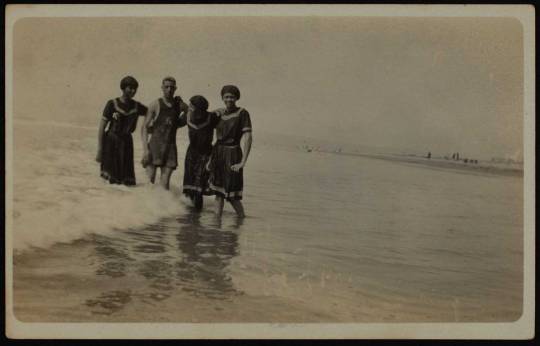
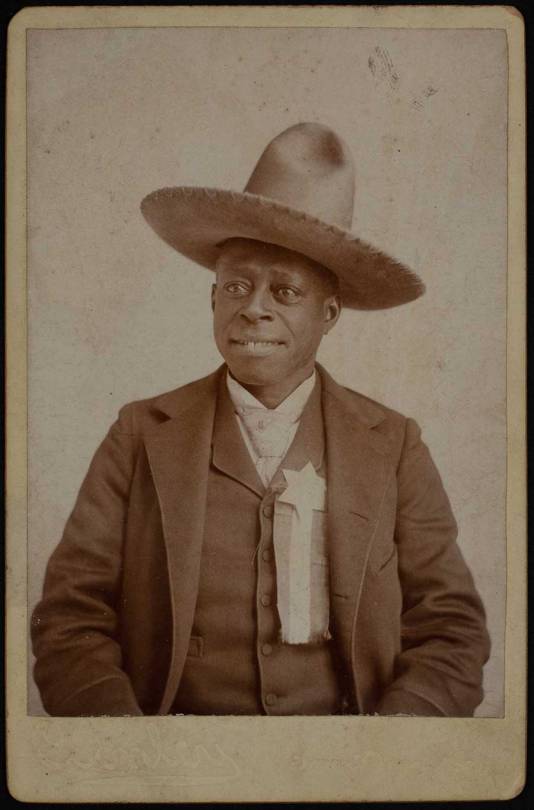
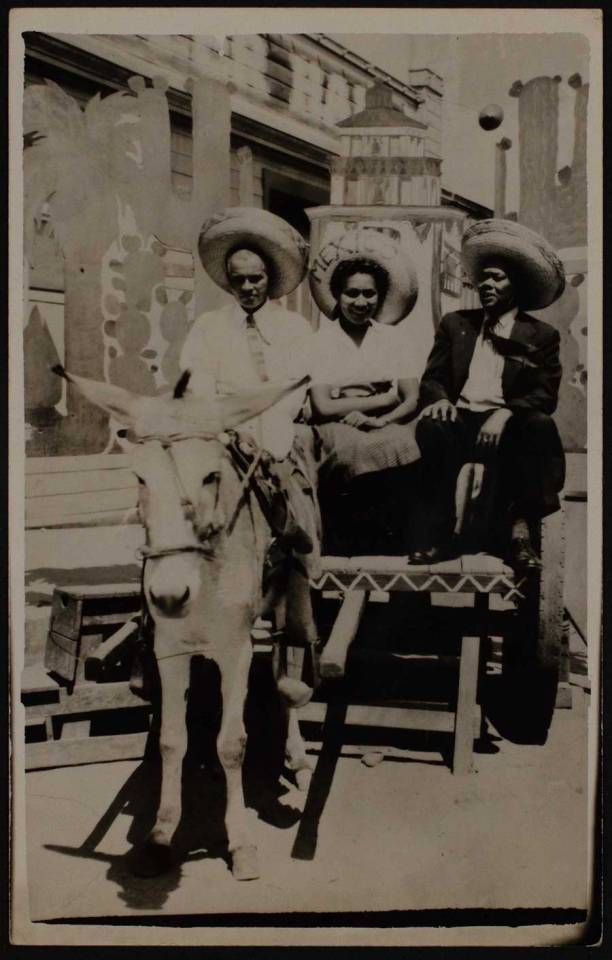
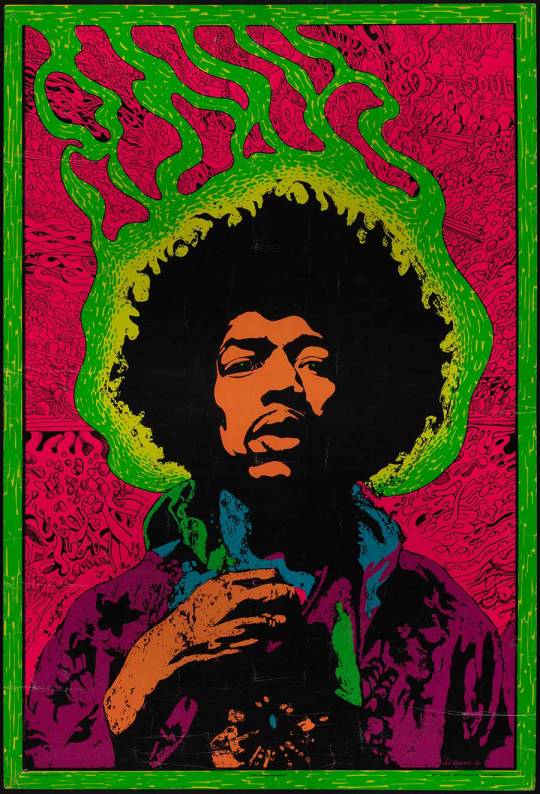
UC San Diego Library’s Special Collections & Archives Acquires its First African Americana Collection
Collection chronicles the African American experience post-Civil War and documents migration West
LA JOLLA, CA—The UC San Diego Library announced today the addition of its first African Americana collection—the Turner Collection—to its Special Collections & Archives (SC&A). Donated by Steve Turner, a UC San Diego alumnus ‘82 and an avid collector, the collection is comprised of more than 300 items including rare photographs, pamphlets, photocards, posters and pinback buttons, many from the 19th century and all of which shed new light on the African American experience, particularly in the American West.
“We are honored to have received this collection,” said Erik Mitchell, the Audrey Geisel University Librarian. “Each piece offers a window into American history, showing a different perspective on times past—how compelling and necessary. It is our pleasure to present these materials to the UC San Diego community and public through our Special Collections & Archives.”
Turner’s focus was on a less well-known migration of African Americans to the West that preceded the great migration from the South between 1916 and 1970. His collection brings to light the story of pioneer immigrants who moved west after the Civil War and before World War II.
Turner wrote, “Their story is one of achievement, participation and the pursuit of the American dream. They range from ordinary citizens to civic leaders and include everything in between… As these items migrate from my collection, I hope that a new generation of scholars will work to flesh out new understandings of both places and peoples.”
Library staff are currently working to digitize many of the materials in the Turner Collection in order to make them readily available to the community via the Library’s Digital Collections website.
“We are confident that these materials will be highly sought after for research and instruction at the university,” said Lynda Claassen, longtime director of the Library’s Special Collections & Archives. “We plan to digitize as many of the materials as possible, thereby expanding their reach, and hope to complete the digitization by year end.”
Today, the UC San Diego Library provides access to more than 7 million digital and print volumes, journals and multimedia materials. The Turner Collection will join other prominent collections housed in the Library’s Special Collections & Archives, located at Geisel Library, including the Hill Collection of Pacific Voyages, Southworth Spanish Civil War Collection, Archive for New Poetry and many more.
While Geisel Library remains closed due to the pandemic, Special Collections & Archives is offering research appointments for UC San Diego students, faculty and staff. Research appointments are limited to requests that are not available online, or that cannot be fulfilled through the Library’s remote service offerings.
For more information about the Turner Collection, please email [email protected].
370 notes
·
View notes
Text
9 political cartoons by Dr. Seuss that are still relevant today.
The legendary children's author had some thoughts about 'America First.'
<br>
Did you know that in addition to being a beloved author of children's books, Dr. Seuss wrote more than 400 political cartoons during World War II?
Theodor Seuss Geisel, better known as Dr. Seuss, gifted the world with stories like "The Cat in the Hat," "The Lorax," "Green Eggs and Ham," and dozens of other childhood classics until his death in 1991.
In recent years, however, it's some of his lesser known works from the 1940s that have gained attention.
Seuss reads from "Horton Hears a Who!" to 4-year-old Lucinda Bell in 1956. Photo via AP.
In the years leading up to World War II, Seuss began penning cartoons for PM, a liberal publication, frequently pushing back against the "America First" mentality of U.S. isolationists opposed to U.S. involvement in the war.
So when candidate Donald Trump adopted "Make America Great Again" as his campaign slogan, echoing cries of "America First" — the rallying call for an anti-Semitic and Nazi-appeasing segment of the wartime U.S. population — some of Seuss' cartoons began to find new relevance more than 70 years after first being published.
Like this one, which depicts a mother reading a book titled "Adolf the Wolf" to children while wearing an "America First" shirt, explaining that because the wolf's victims were foreign children, it didn't really matter that the wolf ate them — a clear parallel to the conflicting approaches to our modern refugee crisis.
"And the Wolf chewed up the children and spit out their bones ... but those were Foreign Children and it really didn't matter." Image dated Oct. 1, 1941, via Dr. Seuss Political Cartoons/Special Collection and Archives, UC San Diego Library.
Image dated Oct. 9, 1941, via Dr. Seuss Political Cartoons/Special Collection and Archives, UC San Diego Library.
"We Clams Can't Be Too Careful." Image dated July 17, 1941, via Dr. Seuss Political Cartoons/Special Collection and Archives, UC San Diego Library.
"The old Family bath tub is plenty safe for me!" Image dated May 27, 1941, via Dr. Seuss Political Cartoons/Special Collection and Archives, UC San Diego Library.
Suess's other comics took aim at overarching issues like anti-Semitism, racial inequality, and political obstructionism — all issues still relevant today.
To be sure, the comics were far from perfect and reflected some ugly stereotypes of their own. For instance, many of his cartoons amplified some pretty awful stereotypes of Japanese citizens and Japanese-Americans. And while it's easy to chalk that up as being simply an element of the time, that type of anti-Japanese sentiment helped fuel the racism and paranoia that eventually led to Japanese internment.
"Only God can make a tree to furnish sport for you and me!" Image dated July 20, 1942, via Dr. Seuss Political Cartoons/Special Collection and Archives, UC San Diego Library.
"Stop all U.S. progress." Image dated Oct. 24, 1941, via Dr. Seuss Political Cartoons/Special Collection and Archives, UC San Diego Library.
"The Guy Who Makes a Mock of Democracy." Image dated July 30, 1942, via Dr. Seuss Political Cartoons/Special Collection and Archives, UC San Diego Library.
"Relax, Sam, I assure you the express turns off right here!" Image dated Sept. 9, 1941, via Dr. Seuss Political Cartoons/Special Collection and Archives, UC San Diego Library.
If the world of Dr. Seuss can teach us anything, it's that history is our best defense against modern tyranny.
Well, that, and the fact that Americans will always love goofy hats:
"We Always Were Suckers for Ridiculous Hats." Image dated April 29, 1941, via Dr. Seuss Political Cartoons/Special Collection and Archives, UC San Diego Library.
See more of Seuss' wartime comics at the University of California San Diego Library's website.
<br>
from Upworthy http://ift.tt/2lYLv1G
via cheap web hosting
0 notes
Photo

Harry Crosby, UCSD, Revelle College residence hall room, 1966
#academia#60s#60s fashion#1960s#1960s fashion#dorm life#vintage fashion#vintage#revelle college#uc san diego#university#residence hall#dorm room#ucsd#university of california#san diego#harry crosby#black and white#photography#special collections & archives uc san diego#an3_m333_783_9
103 notes
·
View notes
Photo

Harry Crosby, UCSD Electronic Music Happening, 1968
#60s#60s fashion#1960s#1960s fashion#vintage fashion#vintage#happening#ucsd#university#college#uc san diego#revelle college#university of california#san diego#black and white#photography#harry crosby#electronic music#happenings#special collections & archives uc san diego#an2_m333_1045_22
42 notes
·
View notes